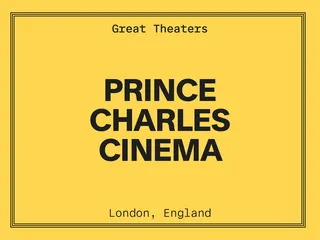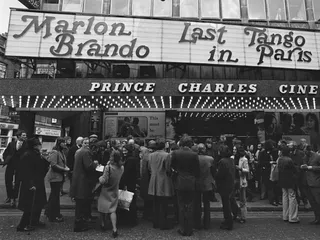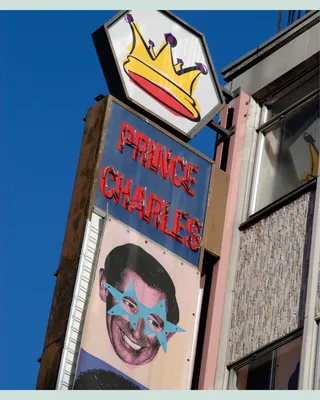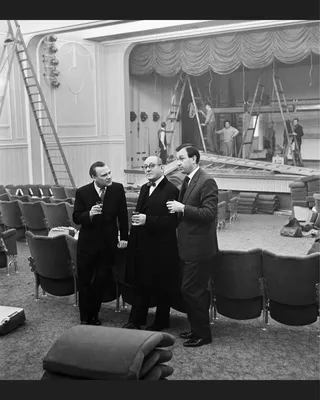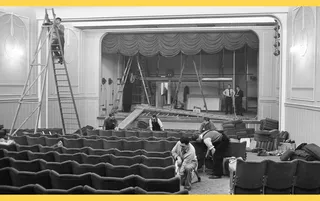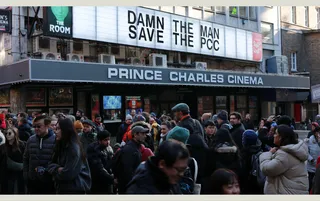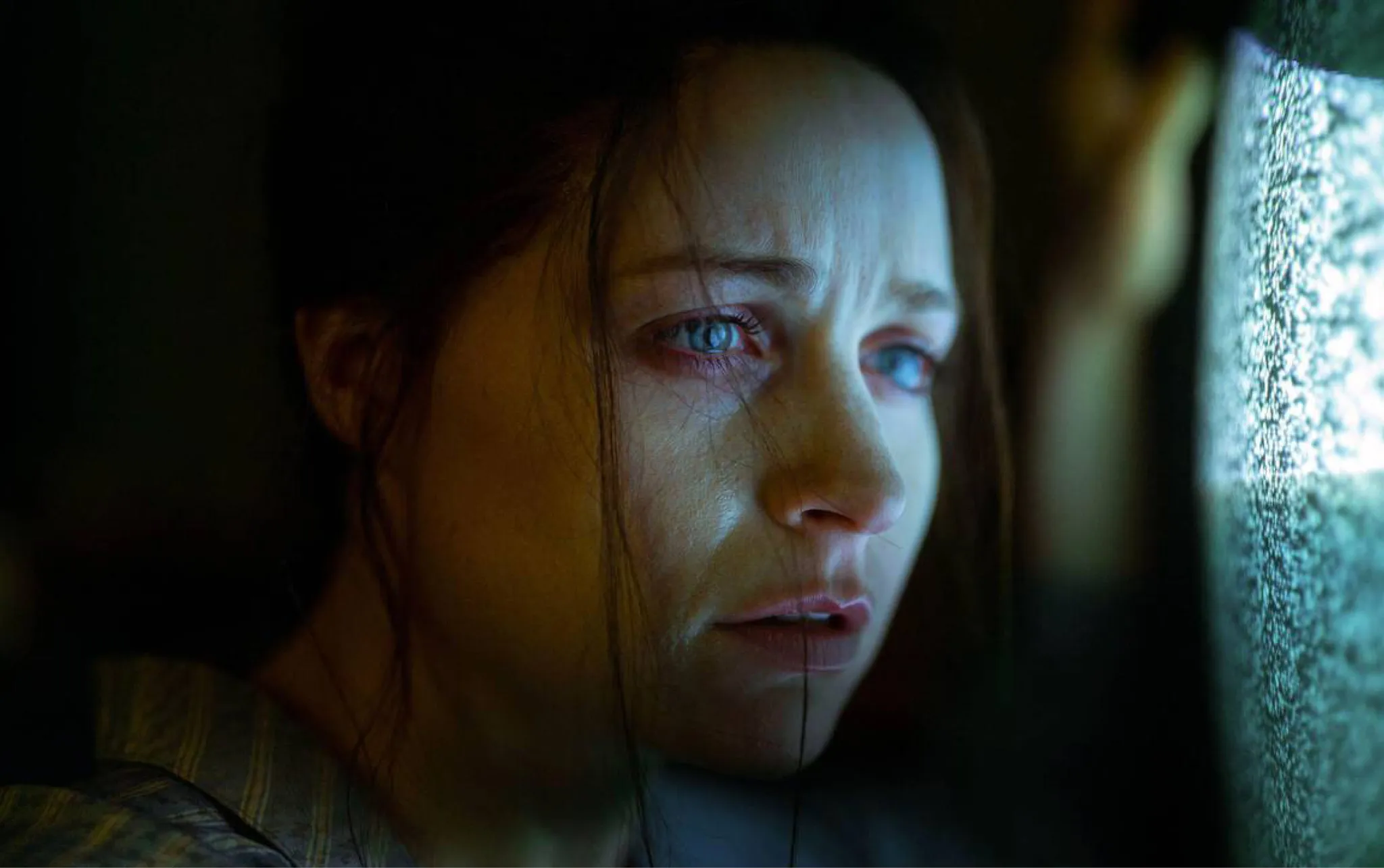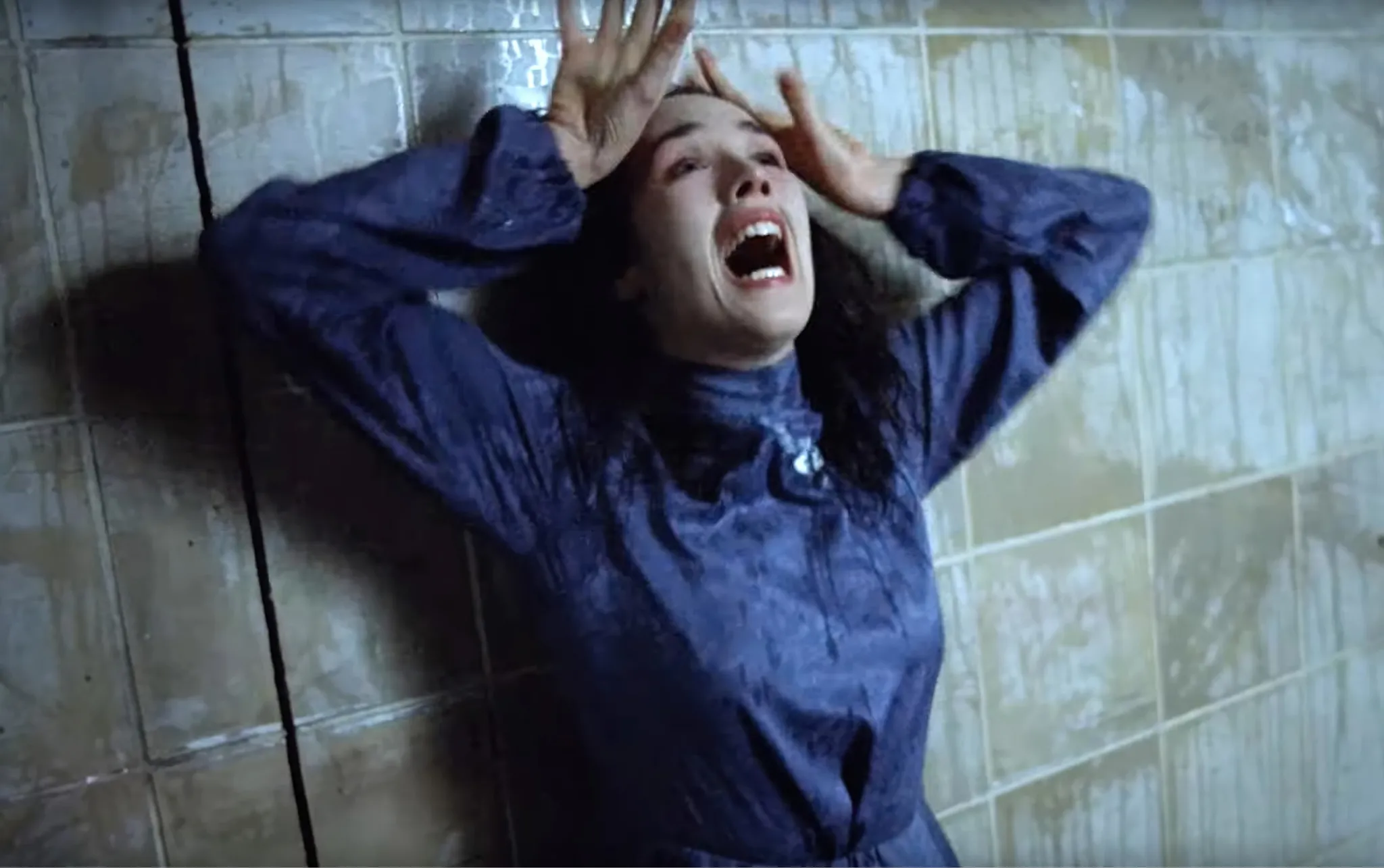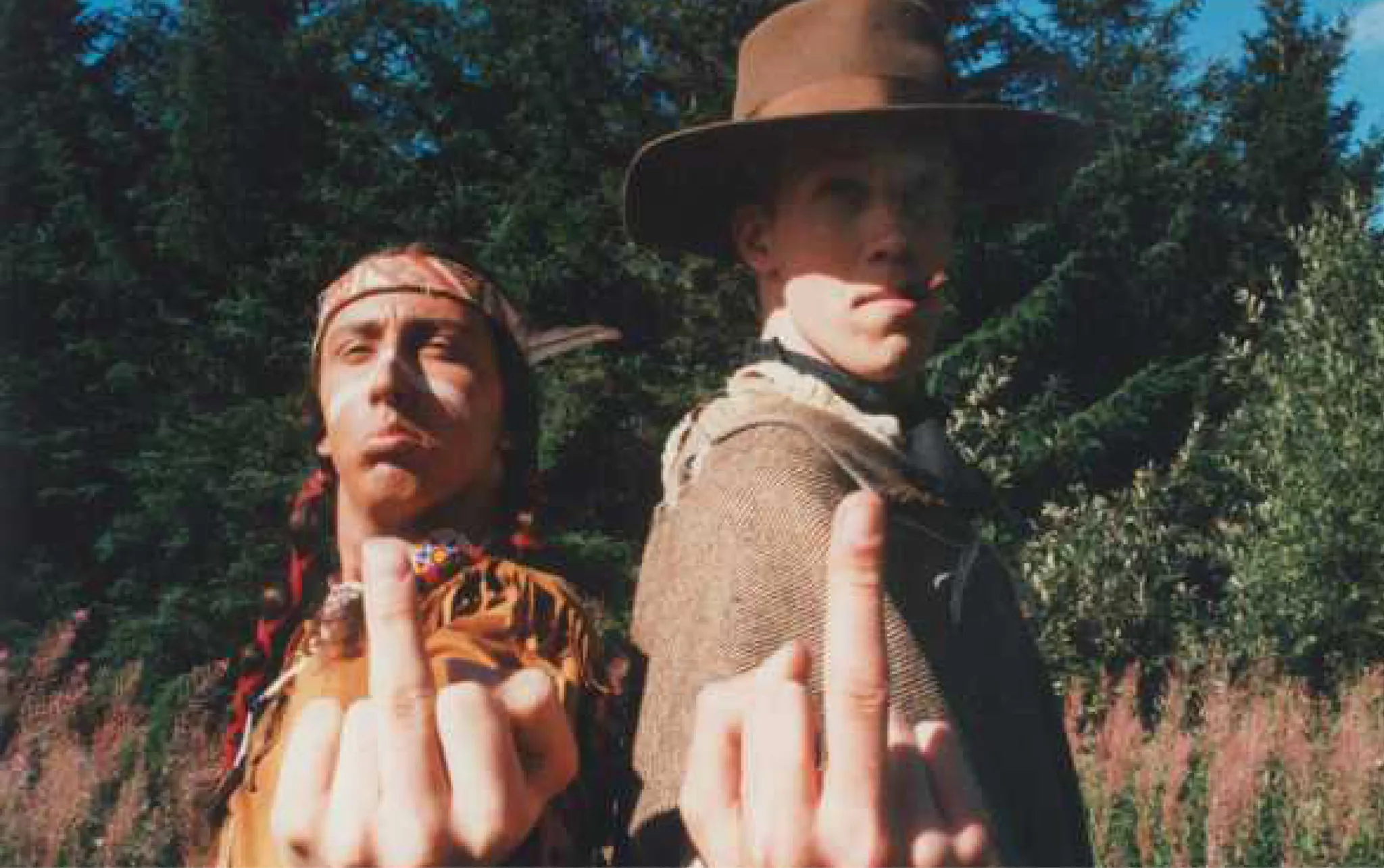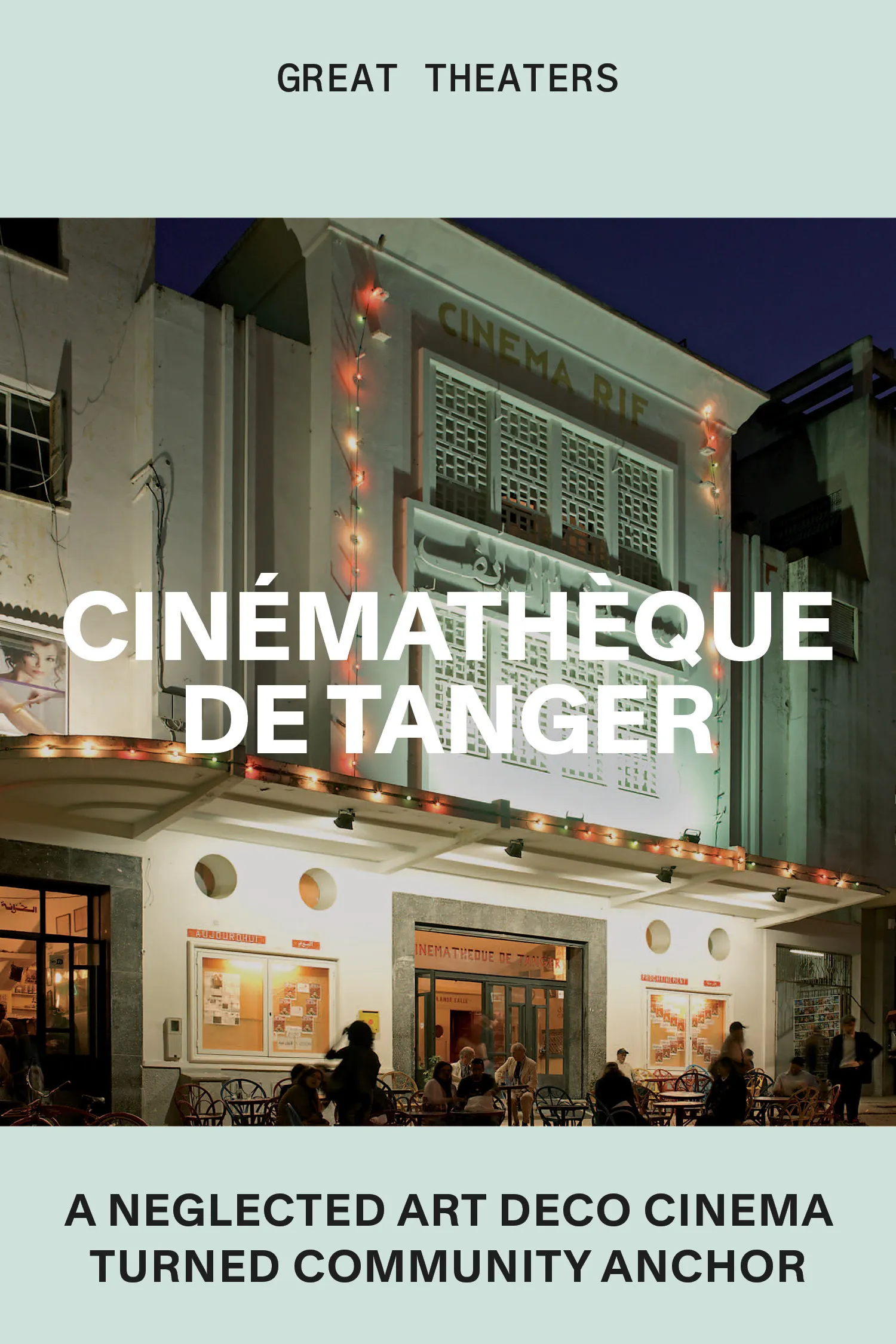Great Theaters: The Prince Charles, London
By Prano Bailey-Bond
Prano Bailey-Bond
Why this cultural institution—home to rare 35mm prints and electric audience communion—must be protected
May 30, 2025
Years ago, I heard the story of a woman who married the Eiffel Tower. Her name is Erika Eiffel. Others have fallen in love with the Berlin Wall, or even a Boeing 737. It’s a curious idea that baffles many—how can someone love a structure? But to me, the question stopped being strange when I fell in love with a place tucked in a quiet corner just off London’s Leicester Square: a glorious independent theater that opened in 1969 and has become a cultural institution—the Prince Charles Cinema. Despite being recently designated an asset of community value (ACV), the theater’s lease is up in September—and the beloved landmark is now under threat of closure by landlords wanting to insert a “break clause” that would allow them to shutter the cinema with only six month’s notice should they decide to redevelop the prime location.
My romance with the PCC began when I moved from rural Wales to London in the early 2000s. The sheer abundance of cinemas in the city was a dream come true. But the Prince Charles stood apart. Surrounded by souvenir shops and chain cafés, with its concrete facade and letter-board marquee, the building felt like a relic from another time—grungy, alive and full of soul. A cinema with the personality of a weathered but wise cinephile uncle. Not corporate. Not curated by trend. Individual.
![]()
The Prince Charles Cinema
![]()
The interior of the theater during construction, 1962
Inside, the walls are lined not just with posters for new releases but for cult classics, hidden gems and forgotten films I’d only ever seen in grainy VHS quality on a tiny TV. The air hums with the buzz of pure movie enthusiasm. Celebratory, unpretentious, unapologetically devoted to film. No fancy bar. No gallery space pretending to be a cinema.
The descent down the steep flight of stairs feels like entering a David Lynch set—a windowless basement that first hints at unease, then reveals itself: velvet curtains, red seats and a screen elevated like an altar. The auditorium curves in a strange banana shape that dips down in the center, forcing you to crane your neck ever so slightly to see past the heads in front. And in doing so, you look up—toward the screen, raised high above you, godlike. The architecture itself demands reverence. More than a physical space, it’s a psychological landscape. And here, movies reign.
One of the few cinemas still equipped for celluloid, it treats even the most battered old print like treasure. Grain, dust, scratches—all become part of the experience. As a filmmaker—and as an audience member—you know that the projection, sound and image are in expert hands. Whenever possible, they show films in the format the director intended. It’s here I first saw Lawrence of Arabia (1962) in stunning 70mm, the desert landscapes becoming tangible—especially when the dust storms rage. Seeing the film in any other format is a compromise. When I watched The Texas Chainsaw Massacre (1974) there on 35mm, I turned to my husband, teary-eyed, and said, “I love cinema.” Perhaps the weirdest movie of all time to move me in this way, but being in that auditorium did that to me.
“How many cinemas remain where John Waters appears on screen before the feature to tell you to ‘turn your phone off, asshole!’”
Since its inception, the Prince Charles Cinema has mirrored the shifting landscape of film culture. Originally built as a theater—with its now-iconic sloped seating—it hosted legends such as Judy Garland, who performed “Never Will I Marry” for a 1964 taping of The Jack Paar Program. Above where the upstairs screen now flickers, the building once pulsed with a very different energy. Back in the Swinging Sixties, it was home to the Ad Lib Club—a hot spot of rock-and-roll excess and whispered legend. Ringo Starr proposed to Maureen Cox at this very club, and it’s even rumored that some members of the Beatles took their first trip on LSD there, an event later referred to as “The Dental Experience,” adding another urban legend to the many that would soon appear on the screen.
But in 1969, the theater took a definitive detour into the world of film, quickly becoming branded as a porn cinema due to extended screenings of Emmanuelle (1974) and Caligula (1979). By the 1980s, it reinvented itself again, becoming a haven for a new wave of horror cinema—Hellraiser (1987), The Evil Dead (1981) and other twisted delights. It was only fitting, then, that years later I would screen my debut feature, Censor (2021), in that same space. A film about a woman who views horror for a living—who edits it, compartmentalizes it and ultimately becomes consumed by it—projected in a cinema with its own history of censorship and transgression, felt eerily poetic.
That night, the auditorium was electric. You could feel the tension ripple and tighten, collective breath held in the dark. When the film veered into its surreal, bloody climax, the audience embraced it—not passively, but viscerally, audibly reacting to every twist. It felt like communion. And during the Q & A that followed, the warmth and insight of the crowd reflected back everything I’d hoped the film could stir: fear, curiosity, empathy, unease. The kind of conversation that reminds you that cinema isn’t just about watching—it’s about feeling something together.
From left: The theater during construction in 1962; a “Save the PCC” marquee in February 2025
Not long after, I was invited to program a video nasty—a term once used to vilify and censor horror films in 1980s Britain. It was a genuine honor: not just a chance to show a film, but to contribute to the cinema’s curatorial voice. I chose Possession (1981), Andrzej Żuławski’s fever dream of grief, madness and monstrous transformation. Watching it unfold on that screen—with its eruptions of horror and hysteria, its slime, sex and existential mania—was unforgettable. When the Lovecraftian creature finally emerged, someone screamed out loud. The kind of scream that doesn’t just react, but releases something. Naturally, it was met with a wave of delighted applause from the rest of the audience.
There’s a particular kind of chaos that only the PCC seems to get right. I remember a screening of Dashcam (2021)—a provocative found-footage horror about a livestreamer spiraling through an increasingly unhinged night—that felt less like watching a film and more like being inside it. Shouted reactions, laughter, someone groaning loudly at a particularly grim moment—the whole room was swept up in the film’s strange momentum. Or The Rocky Horror Picture Show (1975), of course, where people belt the songs like hymns and the lines come from the crowd before they hit the screen. Even a Murder, She Wrote solve-along somehow feels like a shared joke you’re all in on. It’s messy, ridiculous, joyful. A communion with your peers.
My first screening of The Room (2003) was a lesson in rapturous chaos. In my youthful cinephile arrogance, I had insisted on sitting in the front row, imagining this meant I received the images before anyone else—the purest way to watch, and yes, inspired by The Dreamers (2003). But if you know The Room at the Prince Charles, you’ll know this was a mistake. The moment the first framed photograph of that tiny, unremarkable spoon appeared onscreen, cries of “Spoon!” erupted from the audience behind, followed by a flurry of plastic spoons flying through the air, raining down on me and my sister. Each time that spoon crept into the shot, another wave followed. We dodged them, becoming drenched in spoons amid our laughter. I’d been indoctrinated into a special club. Screenings don’t just entertain—they initiate. Every one of them is unforgettable.
![<I>Censor</I>, dir. Prano Bailey-Bond, 2021]() Censor, dir. Prano Bailey-Bond, 2021
Censor, dir. Prano Bailey-Bond, 2021![<I>The Room</I>, dir. Tommy Wiseau, 2003]() The Room, dir. Tommy Wiseau, 2003
The Room, dir. Tommy Wiseau, 2003![<I>Possession</I>, dir. Andrzej Żuławski, 1981]() Possession, dir. Andrzej Żuławski, 1981
Possession, dir. Andrzej Żuławski, 1981![<I>A Fistful of Fingers</I>, dir. Edgar Wright, 1995]() A Fistful of Fingers, dir. Edgar Wright, 1995
A Fistful of Fingers, dir. Edgar Wright, 1995
I’m not alone in my love of the PCC. Filmmakers talk about it with the kind of reverence usually reserved for mentors or muses. In January 2025, the cinema’s management launched a petition to rally public support for the venue, and more than 160,000 people quickly signed it. Those who have spoken out in its defense include Christopher Nolan, Danny Boyle, Robert Eggers, Paul Mescal and Harris Dickinson. Edgar Wright has praised it for being the only cinema to screen his debut feature, A Fistful of Fingers (1995), on its initial release. Jim Cummings once told me he left his film print of Thunder Road (2018) with the PCC because, in his words, “I knew they would look after it and screen it again.” And he was right. The PCC doesn’t just show films. It protects them, champions them and helps them find their audience—which in turn helps films get made. Financiers look to audiences, and the PCC proves there’s a passionate one waiting.
How many cinemas remain where you can regularly experience your favorite films on the big screen and on film? Where audiences queue on the street for even the most obscure titles? Where a screening of a forgotten gem from 50 years ago sells out on a Monday afternoon? Where £1 member screenings and a chalkboard of audience suggestions keep programming unpredictable? Where John Waters himself appears on screen before the feature to tell you to “turn your phone off, asshole!”?
The Prince Charles Cinema is a rare gem that cannot be replaced or replicated. The thought of losing it in the name of greed—to an unscrupulous landlord blind to its magic—makes my heart sink. Pauline Kael neatly articulated this feeling of heartbreak, of warmth and pleasure lost, in her review of Jean-Luc Godard’s Masculin féminin (1966): “Worse than losing a love is holding it in your arms and not finding it.” This cannot be the way our PCC romance ends. Our love for it is unwavering—alive, electric and as devoted as ever. London without it? Unthinkable.
